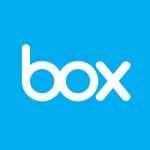What is our primary use case?
We're an IBM business partner. We work with customers who purchase IBM and we help them implement business solutions. Often times, we just influence their decisions. Most of the time FileNet is being used for automation projects.
How has it helped my organization?
An example is one of our customers, an insurance company. They didn't have process-automation before. We helped them implement an IBM product suite with FileNet content management with workflow and analytics. It helped that company reduce processing costs. It helped them unify processes in 21 countries where they have a presence, and they use it as an IT framework that helps them integrate other companies which they acquire. They're big on acquiring smaller organizations to help them grow.
Productivity gains come where workers can focus on more important tasks, higher-value tasks, and where the repetitive tasks are delegated to software.
In the end, almost every solution that we create for our customers helps reduce costs. In most instances the solution has saved time as well. Where we do get statistics from our clients, on average we see 20, 30, or 40 percent gains in terms of turnaround time. You can see that, for example, processing a complicated claim would have taken weeks and with the software solutions built on top of IBM software, sometimes it gets down to days or even hours.
It has improved business processes or case management for our customers. That's the primary purpose, that's the reason why they're investing in the software.
What is most valuable?
The most valuable features of FileNet are its comprehensive ability to store content, to get insights from the content, and to use that content for making decisions routed through workflow.
Nowadays, with the new capabilities, the unattended task processing - so-called robotics or digital employees, digital agents - is where this industry is heading.
What needs improvement?
I think it's to the point where there are probably too many features. Every software, as it matures and graduates, grows the list of features. What many of our customers express is that it's just too complicated. They're using maybe five or ten percent of the features but they're having to pay for 100 percent. There is room for improvement in terms of simplifying it. This is a case where sometimes less is more.
Making it easier to deploy, easier to use, easy to integrate are the biggest areas for improvement.
What do I think about the stability of the solution?
Every new software has bugs, but the FileNet software suite has been around for ages, so it's stable, it works.
What do I think about the scalability of the solution?
The scalability is infinite if you know how to use it in your software products.
How are customer service and technical support?
Technical support is very decent. We've never had issues with it.
How was the initial setup?
The integration of this solution with other products is where we come in as consultants. IBM software works great in the silo, the silo being that you have an IBM software suite and everything is working together great. But when you have a customer that has IBM and three or four or five other repositories, a line of business systems that need to be integrated, that's where typically consultants, systems integrators like our company, come in.
But IBM provides a great API and ways to integrate the software.
What was our ROI?
ROI is hard to tell, it varies. Sometimes it's tangible where it can be measured in percentages from 10 to 15 to 20 or even 40 percent. Sometimes it's intangible, where companies can get ahead of the game, get ahead of the competition, and get their products to market faster.
What other advice do I have?
I would advise a typical due-diligence process. Get hands-on with it, try it out. Do the same with competing products and decide what works the best.
Usability of the product is a complicated question. Anyway it is created, software cannot serve everybody's needs. Most of the time we'll work with very large companies and all of them have their unique needs. We oftentimes start with a base and customize it for each customer and their specific use case. You'll find a number of users that can use software out-of-the-box. But we often have to change it, tweak it, tune it, to tailor it to their specific environment.
FileNet is a nine out of ten. It's been around forever, it's stable, it's mature, it works. We know how to use it. We can confidently recommend it to customers without impacting our reputation.
As a systems integrator, for us, every customer is unique. In every environment there are very distinct challenges, so it's hard to take the knowledge from one client and apply it to another. Every time it's a journey. Sometimes there are technical issues we have to overcome. Oftentimes there are challenges, the business challenges that we help our customers overcome. The exciting part is that it's challenging. Challenges are always exciting, and that's what the software helps us with, overcoming challenges.
Disclosure: My company has a business relationship with this vendor other than being a customer. Partner.













